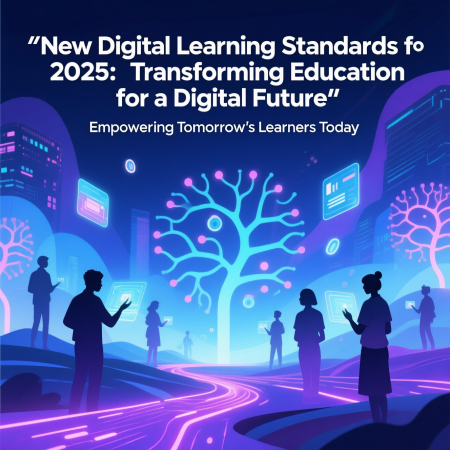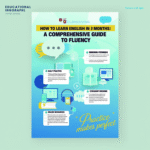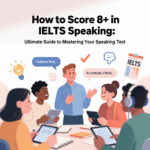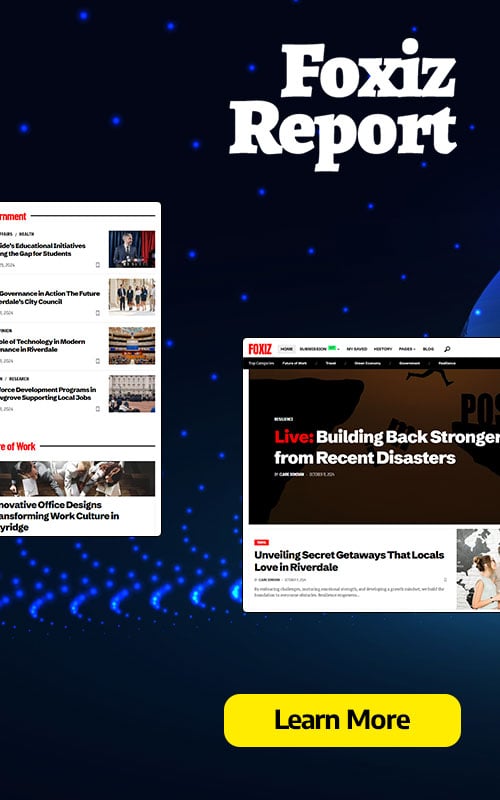In 2025, digital learning standards are reshaping education, aligning teaching practices with the demands of a rapidly evolving technological landscape. As education systems worldwide embrace digital transformation, these standards provide a framework to ensure high-quality, equitable, and impactful learning experiences. We explore the new digital learning standards for 2025, their implications for educators, students, and institutions, and how they drive innovation in pedagogy, technology integration, and student outcomes.
- The Evolution of Digital Learning Standards
- Key Components of the 2025 Digital Learning Standards
- 1. Pedagogy-First Approach
- 2. Technology Integration and Innovation
- 3. Equity and Accessibility
- 4. Data-Driven Instruction
- 5. Educator Professional Development
- Implementing the 2025 Digital Learning Standards
- Aligning Curriculum with Standards
- Infrastructure and Resource Allocation
- Professional Development Programs
- Engaging Stakeholders
- Challenges in Adopting the 2025 Standards
- The Role of AI in the 2025 Standards
- The Impact of the 2025 Standards on Student Outcomes
- Global Perspectives on Digital Learning Standards
- Future-Proofing Education with the 2025 Standards
- Recommendations for Stakeholders
- FAQs
The Evolution of Digital Learning Standards
The journey toward new digital learning standards for 2025 began with the recognition that traditional education models must adapt to prepare students for a digital economy. These standards, developed through collaboration among organizations like the International Society for Technology in Education (ISTE), Quality Matters, and the Virtual Learning Leadership Alliance (VLLA), emphasize pedagogy over tools, ensuring technology enhances learning rather than overshadowing it.
Historical Context of Digital Learning Standards
Digital learning standards have evolved significantly since the early 2000s, when technology integration focused on basic computer literacy. By 2025, the focus has shifted to transformative learning experiences that leverage artificial intelligence (AI), virtual reality (VR), and data-driven personalization. The new digital learning standards for 2025 build on frameworks like the ISTE Standards, which prioritize:
-
Student Empowerment: Encouraging students to take ownership of their learning through digital tools.
-
Educator Competency: Equipping teachers with skills to integrate technology effectively.
-
Equity and Inclusion: Ensuring access to high-quality digital resources for all learners.
-
Data-Driven Decision Making: Using analytics to tailor instruction to individual needs.
These principles reflect a commitment to continuous improvement, addressing gaps in earlier standards that often prioritized access over outcomes.
Why 2025 Standards Matter
The new digital learning standards for 2025 are critical because they address the complexities of modern education. With 71% of students using voice-activated devices for learning and 68% of educators reporting increased reliance on AI tools, standards must evolve to ensure technology serves educational goals. These standards guide schools in creating sustainable, scalable, and high-impact learning environments.
Key Components of the 2025 Digital Learning Standards
The new digital learning standards for 2025 are comprehensive, covering pedagogy, technology integration, accessibility, and assessment. Below, we outline the core components driving this transformation.
1. Pedagogy-First Approach
Unlike earlier standards that focused on hardware and software, the 2025 standards prioritize pedagogy. This approach ensures that technology amplifies teaching strategies rather than dictating them.
-
Student-Centered Learning: Standards emphasize active learning, where students engage in problem-solving, collaboration, and critical thinking through digital platforms.
-
Constructivist Frameworks: Lessons are designed to build on students’ prior knowledge, using tools like interactive simulations to foster deeper understanding.
-
Blended Learning Models: Combining in-person and online instruction to maximize flexibility and engagement.
For example, a high school science class might use VR simulations to explore molecular structures, guided by standards that ensure these tools align with curriculum goals.
2. Technology Integration and Innovation
The new digital learning standards for 2025 advocate for seamless technology integration, ensuring tools enhance learning outcomes. Key innovations include:
-
AI-Powered Personalization: AI platforms analyze student performance to deliver customized content, such as adaptive math exercises that adjust difficulty in real time.
-
Augmented and Virtual Reality (AR/VR): Standards encourage immersive learning experiences, like virtual field trips to historical sites, enhancing engagement.
-
Cloud-Based Collaboration: Tools like Google Workspace and Microsoft Teams are integrated to support real-time collaboration across geographies.
These technologies are not standalone; they are embedded within pedagogical frameworks to ensure meaningful application.
3. Equity and Accessibility
Equity is a cornerstone of the new digital learning standards for 2025. With 20% of global students lacking access to reliable internet, standards prioritize:
-
Universal Design for Learning (UDL): Creating flexible learning environments that accommodate diverse needs, such as text-to-speech for visually impaired students.
-
Device-Agnostic Platforms: Ensuring content is accessible on low-cost devices like tablets or smartphones.
-
Multilingual Support: Offering resources in multiple languages to support non-English-speaking learners.
For instance, standards require e-learning platforms to include captions and transcripts for videos, ensuring accessibility for hearing-impaired students.
4. Data-Driven Instruction
Data analytics play a pivotal role in the 2025 standards, enabling educators to make informed decisions. Key practices include:
-
Learning Analytics: Tracking student progress through dashboards that highlight strengths and areas for improvement.
-
Predictive Modeling: Using AI to identify at-risk students and recommend interventions.
-
Privacy and Ethics: Ensuring data collection complies with regulations like GDPR and FERPA.
For example, a teacher might use analytics to identify a student struggling with algebra, then assign targeted resources to address specific gaps.
5. Educator Professional Development
The new digital learning standards for 2025 emphasize ongoing training for educators. Programs like ISTE’s Instructional Leader Certification focus on:
-
Digital Literacy: Training teachers to use tools like learning management systems (LMS) effectively.
-
Pedagogical Innovation: Encouraging educators to design lessons that leverage AI and VR.
-
Collaboration: Fostering peer-to-peer learning through online communities.
This ensures educators are equipped to implement standards effectively, bridging the gap between policy and practice.
Implementing the 2025 Digital Learning Standards
Implementing these standards requires a coordinated effort among schools, districts, and edtech providers. Below, we detail strategies for successful adoption.
Aligning Curriculum with Standards
Curricula must be redesigned to align with the new digital learning standards for 2025. This involves:
-
Mapping Learning Objectives: Ensuring each lesson meets specific standards, such as fostering critical thinking through digital tools.
-
Integrating Multimedia: Incorporating videos, infographics, and interactive quizzes to enhance engagement.
-
Assessment Alignment: Using digital tools to create formative and summative assessments that reflect standards.
For example, a history curriculum might include a project where students create digital timelines using software like Tiki-Toki, aligning with standards for creativity and technology use.
Infrastructure and Resource Allocation
Successful implementation requires robust infrastructure. Schools must:
-
Upgrade Connectivity: Ensure high-speed internet access to support cloud-based learning.
-
Invest in Devices: Provide students with tablets or laptops, prioritizing low-income communities.
-
Partner with Edtech Providers: Collaborate with companies like Google, Microsoft, and ISTE to access cutting-edge tools.
In 2025, 63% of schools report insufficient device access, highlighting the need for targeted investments.
Professional Development Programs
Educators need continuous training to implement standards effectively. Strategies include:
-
Workshops and Webinars: Offering sessions on AI tools, VR integration, and data analytics.
-
Certification Programs: Encouraging teachers to pursue credentials like ISTE’s Instructional Leader Certification.
-
Peer Mentoring: Creating networks where experienced educators guide novices.
For example, a district might host a webinar series on using AI-driven analytics to personalize instruction, aligning with 2025 standards.
Engaging Stakeholders
Implementation requires buy-in from all stakeholders—students, parents, educators, and administrators. Strategies include:
-
Parent Education: Hosting sessions to explain how digital tools enhance learning.
-
Student Feedback: Involving students in designing digital learning experiences.
-
Community Partnerships: Collaborating with local businesses to fund technology initiatives.
Engaging stakeholders ensures standards are embraced at all levels, fostering a culture of innovation.
Challenges in Adopting the 2025 Standards
While the new digital learning standards for 2025 offer immense potential, adoption faces challenges. Below, we explore these obstacles and solutions.
Digital Divide
The digital divide remains a significant barrier, with 15% of rural students lacking reliable internet access. Solutions include:
-
Mobile Hotspots: Providing portable internet devices to underserved areas.
-
Offline Resources: Developing downloadable content for low-connectivity environments.
-
Public-Private Partnerships: Collaborating with telecom companies to expand broadband access.
Teacher Resistance
Some educators resist digital transformation due to unfamiliarity with technology. Overcoming this requires:
-
User-Friendly Tools: Selecting intuitive platforms like Google Classroom.
-
Incentives: Offering stipends for completing professional development.
-
Support Systems: Providing on-site tech support to assist teachers.
Cost of Implementation
Implementing standards is costly, with schools spending an average of $500 per student on technology. Strategies to manage costs include:
-
Grant Funding: Applying for federal and state grants to support edtech initiatives.
-
Open-Source Tools: Using free platforms like Moodle to reduce expenses.
-
Phased Rollouts: Implementing standards incrementally to spread costs over time.
Data Privacy Concerns
With increased data collection, privacy is a top concern. Schools must:
-
Adopt Robust Policies: Implement strict data protection measures.
-
Train Staff: Educate teachers on privacy regulations.
-
Use Secure Platforms: Select edtech tools with strong encryption.
The Role of AI in the 2025 Standards
AI is a cornerstone of the new digital learning standards for 2025, transforming how education is delivered and assessed. Key applications include:
Personalized Learning
AI platforms like Smart Sparrow and DreamBox adapt content to individual student needs, improving outcomes by 20% in subjects like math and reading. These tools:
-
Analyze student performance in real time.
-
Recommend tailored resources, such as practice questions or videos.
-
Adjust difficulty based on progress.
For example, a student struggling with fractions might receive a customized lesson plan with interactive exercises, guided by AI.
Automated Assessment
AI streamlines assessment by:
-
Grading assignments with high accuracy.
-
Providing instant feedback to students.
-
Identifying patterns in student errors to inform instruction.
This reduces teacher workload, allowing more time for instruction and mentorship.
Predictive Analytics
AI predicts student outcomes, enabling early interventions. For instance, an AI tool might flag a student at risk of failing based on quiz performance, prompting the teacher to offer additional support.
Ethical Considerations
The 2025 standards emphasize ethical AI use, requiring:
-
Transparency in how AI processes data.
-
Bias mitigation to ensure fair outcomes.
-
Compliance with privacy laws.
The Impact of the 2025 Standards on Student Outcomes
The new digital learning standards for 2025 are designed to improve student outcomes across academic, social, and emotional domains. Evidence suggests:
-
Academic Growth: Students in schools adopting digital standards show a 15% increase in test scores.
-
Engagement: Interactive tools boost student participation by 30%.
-
21st-Century Skills: Standards foster skills like collaboration, critical thinking, and digital literacy, preparing students for future careers.
For example, a study by ISTE found that students using VR for science lessons retained 25% more information than those using traditional methods.
Global Perspectives on Digital Learning Standards
The new digital learning standards for 2025 are not limited to one region; they reflect global trends in education. Countries like Finland, Singapore, and Canada have adopted similar frameworks, emphasizing:
-
Finland: Personalized learning through AI and student-led projects.
-
Singapore: Coding and computational thinking as core subjects.
-
Canada: Inclusive education with a focus on indigenous perspectives.
These global models inform the 2025 standards, ensuring they are adaptable to diverse educational contexts.
Future-Proofing Education with the 2025 Standards
The new digital learning standards for 2025 are designed to future-proof education, preparing students for a world driven by AI, automation, and digital innovation. Key strategies include:
-
Lifelong Learning: Encouraging continuous skill development through online platforms.
-
Career Readiness: Aligning curricula with in-demand skills like data analysis and coding.
-
Global Citizenship: Fostering cultural competence through digital collaboration tools.
By embedding these principles, the standards ensure education remains relevant in a rapidly changing world.
Recommendations for Stakeholders
To maximize the impact of the new digital learning standards for 2025, we recommend:
-
For Educators: Pursue professional development in AI and VR tools to enhance instruction.
-
For Administrators: Allocate budgets for infrastructure upgrades and teacher training.
-
For Policymakers: Advocate for funding to address the digital divide.
-
For Edtech Providers: Develop affordable, accessible tools aligned with standards.
-
For Parents: Engage with schools to understand digital learning initiatives and support at-home learning.
FAQs
-
What are the new digital learning standards for 2025?
They are guidelines promoting pedagogy-driven technology integration, equity, and data-driven instruction in education. -
Who developed the 2025 digital learning standards?
Organizations like ISTE, Quality Matters, and VLLA collaborated to create these standards. -
How do the 2025 standards differ from previous ones?
They prioritize pedagogy over tools, emphasizing student-centered learning and accessibility. -
What role does AI play in the 2025 standards?
AI supports personalized learning, automated assessment, and predictive analytics. -
How do the standards address equity?
They promote UDL, device-agnostic platforms, and multilingual resources to ensure access for all. -
What challenges do schools face in implementing these standards?
Challenges include the digital divide, teacher resistance, costs, and data privacy concerns. -
How can educators prepare for the 2025 standards?
Through professional development, such as workshops and certifications in digital tools. -
What is the role of VR in the 2025 standards?
VR enhances engagement through immersive experiences like virtual field trips. -
How do the standards improve student outcomes?
They boost academic performance, engagement, and 21st-century skills. -
Are the 2025 standards globally applicable?
Yes, they align with global trends in countries like Finland and Singapore. -
How do the standards address data privacy?
They require transparent data practices and compliance with regulations like GDPR. -
What tools support the 2025 standards?
Platforms like Google Workspace, Microsoft Teams, and AI tools like Smart Sparrow. -
How can schools fund implementation of the standards?
Through grants, open-source tools, and phased rollouts. -
Why is pedagogy emphasized in the 2025 standards?
To ensure technology enhances, rather than overshadows, teaching strategies. -
How do parents support the 2025 standards?
By engaging with schools and supporting at-home digital learning.

















